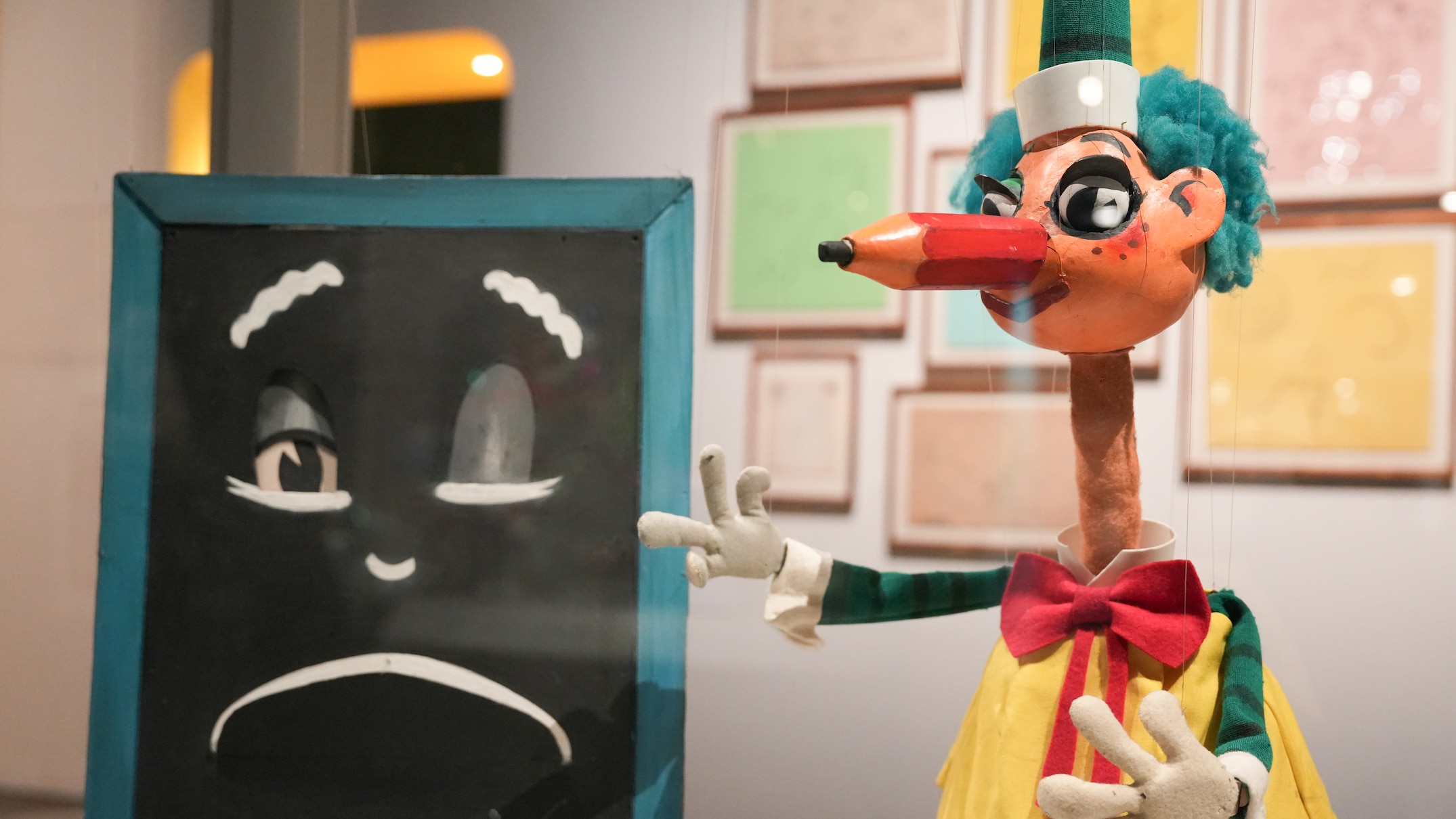A Legacy of Imagination and Creativity
The National Museum of Australia in Canberra is currently showcasing a fascinating exhibit that celebrates the enduring legacy of one of Australia’s most beloved children’s television characters, Mr Squiggle. This special display features hundreds of iconic items from the long-running show, offering visitors a unique glimpse into the creative world of its creator, Norman Hetherington.
The Man Behind the Pencil Nose
Mr Squiggle, a man from the moon with a pencil for a nose, captivated the imaginations of generations of Australian children. For 40 years, the character lit up TV screens, bringing joy and creativity to young audiences. Now, decades after the show first aired, the museum has brought the magic of Mr Squiggle back to life through an extensive collection of artworks, scripts, puppets, and other memorabilia.
Norman Hetherington, the mastermind behind Mr Squiggle, was not only a talented cartoonist but also a skilled puppeteer. He operated and voiced the blue-haired, floppy, pencil-nosed puppet, combining his artistic talents to create a character that became a household name.
The Sidekicks and the Last Host
Nineties kids will remember Mr Squiggle’s loyal sidekicks, including the grumpy Blackboard, Bill Steamshovel, and Gus the Snail. These characters added humor and charm to the show, making it a favorite among young viewers. Miss Rebecca, the daughter of Norman Hetherington, also played a significant role as the show’s last host, continuing the family tradition of bringing Mr Squiggle to life.
Rebecca Hetherington, who now oversees the legacy of her father’s work, expressed her excitement about the exhibition. She praised the museum for its efforts in restoring and preserving the original items, ensuring that future generations can experience the magic of Mr Squiggle.
Tools of the Trade
Rebecca recalls her childhood experiences with Mr Squiggle, describing the puppets as “tools of the trade” that were treated with care. However, she notes that her grandchildren have been allowed to interact with the puppets, highlighting how the legacy of Mr Squiggle continues to inspire new generations.
Her youngest son, Tom, has developed a passion for puppetry, following in the footsteps of his grandfather. Rebecca believes that Mr Squiggle’s legacy will live on through her family and the countless children who have been inspired by the show.
Immersion in Creativity
The ABC’s Mr Squiggle and Friends first aired in 1959 and quickly became one of Australia’s longest-running children’s programs. It encouraged children to pick up crayons and explore their creativity, with the show featuring input from audiences across the country. Children would send in their doodles, which were then placed on Mr Squiggle’s grumpy blackboard and transformed into new characters.
The exhibition has recreated this interactive experience, allowing children to engage with the show’s spirit by squigglings on digital screens and creating characters from abstract markings. This hands-on approach offers a fresh way for younger generations to connect with the creativity that defined Mr Squiggle.
A World of Imagination
Museum curator Sophie Jensen highlights that many people are familiar with Mr Squiggle but may not know the full extent of Norman Hetherington’s creative universe. The exhibit showcases a variety of other lively characters, including camels in hats, turtles playing ukuleles, and a shrimp with a tuba. Each item has undergone careful examination and preservation to ensure its longevity.
Conservators have retouched paint and sourced materials where necessary, while also taking steps to limit light exposure. To protect the puppets during storage, hundreds of cushions were created to support them.
A Legacy of Joy and Creativity
Ms. Jensen hopes that visitors will leave the exhibition with a deeper understanding of Norman Hetherington’s creative world. She emphasizes that the legacy of Mr Squiggle is not just about the gentle and playful nature of the character, but also about the joy of fun and creation.
While modern technology offers children a wide range of entertainment options, Ms. Jensen notes that the hand-crafted, personal nature of Mr Squiggle stands out. Unlike many contemporary shows, which are often two-dimensional, the use of puppetry in Mr Squiggle adds a unique, tactile quality that resonates with audiences.
Experience the Magic
The exhibition, titled “Mr Squiggle and Friends: The Creative World of Norman Hetherington,” is free to visit at the National Museum of Australia and will be open until mid-October. It is a celebration of imagination, creativity, and the enduring legacy of a beloved Australian icon.







